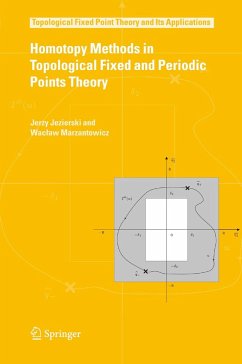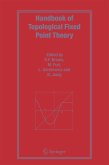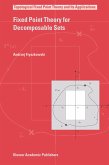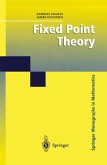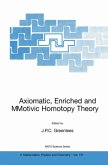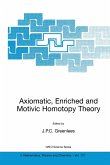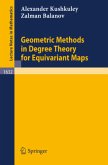The notion of a ?xed point plays a crucial role in numerous branches of mat- maticsand its applications. Informationabout the existence of such pointsis often the crucial argument in solving a problem. In particular, topological methods of ?xed point theory have been an increasing focus of interest over the last century. These topological methods of ?xed point theory are divided, roughly speaking, into two types. The ?rst type includes such as the Banach Contraction Principle where the assumptions on the space can be very mild but a small change of the map can remove the ?xed point. The second type, on the other hand, such as the Brouwer and Lefschetz Fixed Point Theorems, give the existence of a ?xed point not only for a given map but also for any its deformations. This book is an exposition of a part of the topological ?xed and periodic point theory, of this second type, based on the notions of Lefschetz and Nielsen numbers. Since both notions are homotopyinvariants, the deformationis used as an essential method, and the assertions of theorems typically state the existence of ?xed or periodic points for every map of the whole homotopy class, we refer to them as homotopy methods of the topological ?xed and periodic point theory.
Hinweis: Dieser Artikel kann nur an eine deutsche Lieferadresse ausgeliefert werden.
Hinweis: Dieser Artikel kann nur an eine deutsche Lieferadresse ausgeliefert werden.
From the reviews of the first edition: "This book contains an up-to-date exposition of the topological fixed and periodic point theories associated with the names of Lefschetz and Hopf and of Nielsen. The phrase "homotopy methods" in its title refers to the fact that the foundations of these theories lie in algebraic topology and thus depend on tools that are homotopy invariant.The feature that most sets the book apart from its predecessors is the presentation, occupying about one half of its more than 300-page length, of the theory of periodic points that is based on algebraic topology. A chapter on the sequence of integers that arise as the Lefschetz numbers of the iterates of a map informs the reader about what is known concerning such sequences and how this knowledge leads to information regarding its periodic points. The most distinctive chapters are concerned with the Nielsen theory of periodic points and with homotopy minimal periods. The first of these chapters contains a complete exposition of the first author's recent proof of the Halpern Conjecture, a result that demonstrates that the Nielsen periodic point number is a sharp estimator in an appropriate sense. The second presents what is now known, much of the more recent advances due to these authors, about the set of integers that have the property that all maps homotopic to the given map have periodic points of minimal periods that are the integers in the set.The book contains useful scholarly apparatus: an extensive bibliography, a reasonably detailed index, even an index of the authors that are mentioned in the text and, particularly welcome, an index of symbols. The authors have collected a substantial amount of attractive mathematics, some of it not easily accessible, and presented it in a well-organized manner. Homotopy Methods in Topological Fixed and Periodic Point Theory is a very welcome addition to the literature of topological fixed point theory."(Professor R.F. Brown, University of California, Los Angeles, USA) "The book is very well written and makes for an excellent introduction to the subject of Nielson theory with a strong emphasis on the estimation of periodic point behavior of a given map. The book is suitable as a text for an advanced graduate level course, or for a mathematician interested in becoming acquainted with ... current research topics involving Lefschetz and Nielson theories. ... the book will also be a useful reference tool for researchers in fixed point theory and in dynamical systems." (Michael R. Kelly, Mathematical Reviews, Issue 2006 i) "This is an up-to-date exposition of the topological fixed and periodic point theories of selfmaps of finite polyhedra. ... There is a carefully selected bibliography, an index of the authors mentioned in the text as well as a traditional index and also an index of symbols. ... This fine book is the first extensive exposition of this sort of topological fixed point theory and related topics since Jiang's lecture notes of 1983 ... ." (Robert F. Brown, Zentralblatt MATH, Vol. 1085, 2006)

